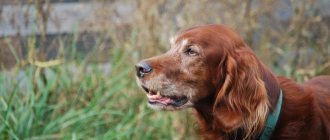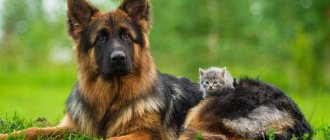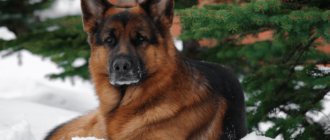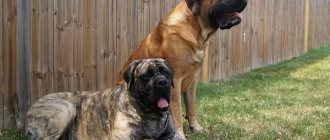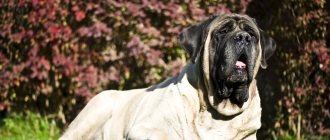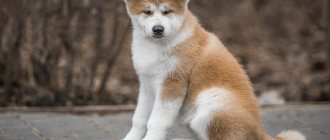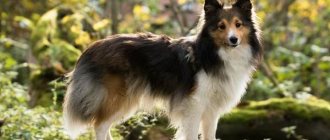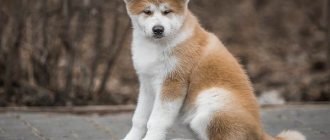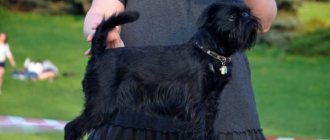Elegant, tactful, intelligent, the Saluki is a dog breed ideal for gentle companionship, racing or hunting game without a gun. If you need a reliable partner who will not require much attention, but will always be ready to lend a loyal, friendly shoulder, then we advise you to take an interest in the characteristics of the Persian Greyhound. Perhaps she is the dog of your dreams.
Description and features
The people who are responsible for the breeding of this dog are the Bedouin Arabs. They needed it to hunt gazelle. Many centuries ago, this dog conquered every heart. The nomads appreciated her amazing hunting abilities, as well as her keen ingenuity and intuition.
Nowadays, the animal is exploited for hunting smaller game, such as hares. But still, Salukis are increasingly being kept as a companion, and not as a hunter.
The dog is quite tall, up to 70 cm. Its weight ranges from 20-25 kg. The length of a dog's coat depends on its type; it can be either long or short. Salukis have very long legs, straight ears that hang down. The beauty of a dog has been talked about since ancient times. She has a rather piercing gaze. They say that the Saluki can accurately read human emotions.
Interesting fact! In Ancient times it was impossible to buy a dog of this breed. It was presented as a gift. It was always received with gratitude and was greatly appreciated.
Amazing sense of smell, fast running and endurance - these are the basic qualities that make this dog an unrivaled hound. She never inflicts fatal damage on her prey, because this mission is entrusted to its owner. Once the Saluki has caught up with the game, it will hold it firmly with its teeth until its owner arrives. He kills her in two ways: with a bullet or with a knife.
Nomadic Arab tribes treated the animal with great respect. There were times when he was respectfully loaded onto a horse to be taken to the desired hunting territory. However, the dog did not need such transportation, because fatigue was practically unknown to him. The Saluki is able to move quickly, rapidly increasing its running speed, while maintaining even breathing.
Exterior features help her in this (we are talking about long legs and a thin body). By the way, one of the signs of a healthy dog of this breed is clearly visible ribs.
Now let's talk in more detail about the exterior features of the Saluki:
| Muzzle | The jaw moves forward a little. The bite is correct, the teeth are sharp |
| Eyes | Oval, large, expressive |
| Head | Blends with a thin body and has an oblong shape |
| Nose | Large, may have poorly visible pigmentation |
| Paws | Symmetrically spaced, long |
| Frame | Strong, muscular |
| Neck | Long, has a bend |
| Ears | Long, mobile. They can become erect when excited. |
Breed standard
The formation of the Saluki took place in different nomadic tribes. As a result, depending on the area where the gazelle dog was formed, its body type was determined. There are two options:
1. Desert type of Persian greyhound - relatively short stature, graceful constitution. 2. Mountain type Persian greyhound - tall, well coated, bony.
Elegance, grace, dry build, power, and endurance are inherent in every representative of the Saluki breed.
Adults weigh 17-28 kg. , height at the withers is about 55-70 cm .
A very narrow, elongated head rests on a strong, long, beautifully curved neck. The skull is flat, without convexity. The ears are hanging and long. They are always on the move. There is a decorative hair of quite long length on the ears.
The eyes are oval-shaped, large, slightly convex. The color is brown or dark brown.
The nose is large with wide open nostrils. Natural flesh color or black.
The jaws are unusually powerful. The bite is correct, claw-shaped. The fangs are strong. The Saluki is capable of holding a caught deer in place with its teeth for quite a long time until the owner arrives.
The back is wide. The chest is flat and deep. The stomach is strongly tucked. The ridge is so flexible that a Persian greyhound at full speed is capable of abruptly changing direction and turning around.
The legs are very long and straight. The muscles are highly developed. The hock joint is low. The paws are powerful, the toes are long and convex.
A feature of the Saluki breed is that both inner toes on all limbs are much longer than the outer toes. According to the standard, a cat's paw is unacceptable.
A high, flying step. The gait is proud, aristocratic, if the greyhound is in a calm state. During pursuit, the Saluki pushes off powerfully with its hind limbs, throwing its forelimbs forward.
Frequent shuffling of the legs (“dancing”) is unacceptable in the movements of representatives of this breed.
The tail is long, slightly curved.
The Persian Greyhound is divided according to coat into two varieties:
1. Smooth - smooth-haired, which is very similar to the short-haired Slugi breed. Salukis with this type of coat are inferior in number to long-haired ones and are considered a rare species. 2. “In feathers” - long-haired, no undercoat. There is decorative hair on the ears, tail and “burki” on the hind legs.
According to the standard, almost all colors except brindle are acceptable. The most common and popular Salukis have red, white, black and tan, silver, and cream coat colors.
Character
For those who do not like loud barking, the Saluki breed . She is not characterized by hyper-emotionality; she prefers to behave with restraint. The animal is always confident in itself, and if something from the surrounding world is not clear to it, it prefers to stay close to its owner.
A dog of this breed is very affectionate with each member of his family, but always chooses “person number one” for himself. Criteria for his selection: fortitude, moral stability, leadership. If you do not possess these qualities, then the Saluki will definitely not recognize you as its owner.
The breed is quite willful. She needs regular social contact with people. In his absence, he shows stubbornness and even resentment. For example, if an animal wanted to play, but you rudely refused it, it will silently leave and will not bother you about this for a long time. These dogs only show excessive agitation when hunting. At home they are less active.
As for their attitude towards children, it is more than welcoming. You can safely leave your dog alone with your baby without fear that it will harm him. These dogs are not prone to domestic aggression. A hound can lie next to a child for a long time, licking it and protecting it from others. A gentle attitude towards children is one of the main reasons for buying a dog of this breed these days.
The balanced nature of the animal makes it easier to train. You can have a dozen Salukis and leave them in the same area without any fear of them starting to fight. Dogs rarely physically harm each other without a clear reason.
A dog breeder who loves to be nice to his dog may be surprised at the relative coldness of the Saluki in communication. These self-confident dogs prefer to keep a distance from people, even from their owner. “Slicker” is definitely not what you would call a dog of this breed.
She is always reserved and focused. Excessive alertness manifests itself even in a relaxed state. When an animal is in a good mood, it will lie down next to a person and begin to rest. There can be no talk of any sudden movements on his part; the Saluki doesn’t need them.
The dog's behavior will change little when guests come to his house. He will never show aggression towards them, but he will not give them a warm welcome either. The dog will accompany the owner or will retire.
Advice! In order for the ice to break in the heart of the Saluki, and for her to become more gentle and open, it is recommended to spend a lot of time with her. Good intuition allows these animals to adapt to human moods and react based on it. Therefore, regular stroking and kind words will help make her more good-natured.
Even despite the coldness towards this dog, she, like all other representatives of her species, needs human love. The psychological climate in the family is very important for Salukis. She feels people's emotions very subtly and suffers if they are negative. The dog may not show it when watching your happiness, but believe me, at the same time he also feels positive emotions.
Characteristics of the Saluki
| Attachment level | High |
| Friendliness | Average |
| Child friendly | High |
| Loyalty to other pets | Medium-High |
| Exercise needs | Medium-High |
| Playfulness | Average |
| Energy level | High |
| Learning ability | Average |
| Intelligence | Medium-High |
| Tendency to bark | Short |
| Shedding amount | Average |
Kinds
Arab nomads developed several varieties of Saluki. In character they are not much different from each other. The main criterion for difference was the type of coat. One type of breed, the mountain one, has very delicate long hair, while the second, the desert type, on the contrary, has rough and short hair.
The second type of breed differs from the first in its small stature, 10-13 cm shorter.
Regardless of the Saluki type classification, it has a lean body with a clearly visible skeleton, especially on the belly. An inexperienced person can say about such dogs that they are hungry. This is not true. Thinness is a feature of many hound breeds. The exterior of this dog allows it to catch up with prey on almost any terrain, firmly holding it with its teeth until the owner arrives.
Hunting
The Saluki's maximum speed (68.8 km/h) was officially recognized as a world record and included in the Guinness Book. Thanks to the special physique, during running, vibration from impacts on the ground is dampened, which reduces the dog’s fatigue.
Note! When training a Saluki, it is important to be consistent and use only positive motivation methods. Representatives of the breed are distinguished by their fine mental organization and are very offended by rough treatment.
Since ancient times, the Salukis learned to hunt with nomads. Typical greyhounds are easily trained to work with hare, fox, and hounds. The Saluki's abilities are limitless; they work well against any type of animal, alone, in a pack or in pairs, including birds of prey.
Care and maintenance
Dog handlers are still arguing about when to train a dog. There are different options: at 2 months, at six months, from birth, etc. In fact, you need to train such a pet from the first seconds of contact with it.
As for caring for a Saluki, it cannot be called difficult. This breed is not characterized by a specific “dog” smell. The reason is the lack of undercoat. She sheds rarely, and in some individuals it is completely absent, especially in short-haired ones.
Keeping a Saluki does not require frequent bathing. The dog takes care of its hygiene on its own. You should use a special shampoo no more than 1-2 times a year. If the animal gets dirty, it is recommended to use a towel soaked in water and wipe it in this place. An alternative option is to use special wipes for animals, which can be purchased at pet stores.
To keep their coat always presentable, it is recommended to use a silicone comb or comb. The teeth should not be pointed, otherwise combing will become torture for the dog. Most four-legged friends love these procedures.
It is recommended to carry them out regularly, and not only for hygienic reasons. The fact is that any tactile contact strengthens the pet’s connection with its owner.
The naturally closed ears of the Saluki require special care; large amounts of dust and dirt can accumulate in them, which can cause inflammation and itching of the ears, so the owner should regularly wipe his pet’s ears with a damp cloth or a piece of clean cloth soaked in warm water. water.
Some hounds get very upset when they see a cotton pad in a person's hands, because they know that cleaning with it will not bring them pleasure. But, knowing the rule of positive reinforcement, it will be possible to simplify the dog’s reaction to this stimulus. Every time you clean the Saluki's ears of dust and dirt, massage the back of her head. This will bring pleasure to the animal, and it will not be afraid of such a procedure.
Also, do not forget about removing plaque. The simplest option to prevent this problem is to regularly purchase dental bones. The animal loves to chew on it. However, some dog breeders prefer more professional dental care for their pet.
They take him to a veterinary clinic where, with the help of dog toothpaste, the animal's plaque is removed. This procedure should be performed once every 2 years.
The Saluki's eyes also need care. Periodically they should be wiped with tea leaves. It is necessary to wash your pet's face if, after digging in the ground or dust, lumps have formed on its mucous membranes. But you shouldn’t help your dog grind down its claws. She copes with this task perfectly on her own.
A caring owner should remember the need to subject the hunting dog to physical activity. The animal must be in motion regularly. Steeplechasing will be a good thing for him. The ideal option is a long walk through the forest.
Nutrition
Saluki puppies grow very quickly, therefore, their bones can only be helped to become strong through a properly organized diet. The basic rule is that it must be balanced. Since a puppy of any dog breed especially needs energy (due to increased activity), it should be fed 4 to 6 times a day. There are 2 “food” strategies:
- After the dog has stopped feeding on mother's milk, she is immediately given puppy food, which includes all the minerals necessary for growth. As she grows, her food also changes.
- Until 1 year, the dog eats dairy and meat products, and then feeds.
The second option is better. In addition to milk and raw meat, the puppy is also given vegetable soups, purees, baked goods and boiled eggs. Such a diet will saturate the dog’s body with all the vitamins it needs for full growth and development. However, regardless of the chosen strategy, Saluki will have to be excluded from the menu forever:
- Sweets: marshmallows, cookies, chocolate, marmalade, etc.
- Fats: butter.
- Semi-finished products: dumplings, pasties, etc.
Any errors in your pet’s diet can cause inflammation of its gastric mucosa and other health problems.
Reproduction and lifespan
Salukis live from 11 to 14 years. If an animal regularly spends time in the fresh air, is vaccinated and eats properly, it will serve its owner faithfully for a long time. Illness, poor diet, and lack of physical activity can shorten your lifespan.
A female Saluki becomes sexually mature by the 7th month of life, and a male by the 9th month of life. However, it is strictly forbidden to breed them at this age. The fact is that the 7-month-old dog has not yet formed physically, and psychologically too. He is a puppy.
Therefore, mating young hunting dogs can result in physical or psychological trauma for them, especially for females. Experienced breeders know that the best age for breeding dogs is 2 years. Healthy Salukis do not lose their ability to reproduce until they are 10 years old.
Dossier
Adult height: 48 – 71 cm. Weight: 18 – 27 kg. Characteristic color: white, gray, fawn, red, black and tan, piebald, except brindle and albino. Coat length: short with feathering. Life expectancy: 12 – 14 years. Advantages of the breed: no specific dog smell, good health. Complexity of the breed: the hunting instinct is strongly expressed. Saluki price: $500 – $950. Classification: hunting, coursing, racing, companion dog.
Price
Today, you can buy a Saluki puppy from individual breeders and nurseries. Experienced dog breeders recommend the second option. The fact is that in nurseries, before purchasing a dog, they provide documentary guarantees regarding its health and condition.
Important! Be sure to pay attention to whether the puppy has all the necessary vaccinations. Information about them should be in his personal passport.
The price of a Saluki breed , or rather a 2-month-old puppy from a nursery, is 30-55 thousand rubles. Purchasing an animal without a pedigree and relevant documents from private breeders will cost 25-30 thousand rubles. However, there are also more expensive offers, starting from 60 thousand rubles.
Regardless of where exactly you decide to purchase a puppy, in a nursery or from a breeder, pay attention to such parameters as its appearance and curiosity.
Origin story
The Saluki breed is without a doubt one of the oldest. These dogs were bred to be used for hunting. According to many experts, the Persian greyhound was the first dog to live near people. Images of Salukis were discovered in Egypt, in ancient burials. The animals are native to Iran and the Arabian Peninsula. The name of the breed is tied to the Arab city of Saluki. At one time, animals were valued very expensively; only wealthy people could afford them.
Due to the fact that their owners wandered from place to place, the animals quickly spread throughout the Middle East, and already in the Middle Ages they appeared in European countries. In the 19th century, proud animals were brought to England, where they aroused genuine interest among the local population. At the beginning of the 20th century, the Persian greyhound received the status of a separate breed, and a little later a standard was adopted, which became the basis used in breeding and evaluating animals.
Training
Raising a dog of any breed is a long and important stage. The type of relationship the owner builds with his four-legged friend immediately determines whether he will obey him, follow commands, etc.
From the first seconds of communication, you need to show the animal who you are for him. When getting to know him, it is important to restrain his joy as much as possible, so that the dog understands that you are serious, and in the future he will have no doubts about the need for obedience.
If a person shows weakness of spirit, the Saluki will never recognize him as the head of the house. In this case, the dog will become obstinate and overly stubborn. List of commands that should be taught to her:
- Place. A very important command that should be given when guests come to the house, especially those who are afraid of large dogs.
- Ew/no. It is recommended to give these commands by clicking with two fingers. The dog must know that there are rules that he cannot break, for example, he should not be allowed to chew shoes, bark for no reason, or approach a person who is afraid of him.
- Near. The command is given during a walk, especially if you walk the dog without a leash. You need to say “nearby, ugh” if, during a walk, she reacts to other animals.
Training the Saluki breed should include training in additional commands: fetch, sit, lie down, give a paw/give another. These dogs are not distinguished by their ingenuity, therefore, there is no need to count on the fact that they will improvise during training. Docile Salukis look cute and cuddly in the photo.
This animal must not be beaten. Physical abuse will never be forgiven to them. When training a dog, it is better to use the carrot method than the stick method. Every time he makes you happy, give him a treat, such as a piece of cheese. Positive reinforcement will help your pet quickly learn all the necessary commands.
The distrust that has arisen between the Saluki and its owner can complicate the training process. Remember, communication with this proud dog must be based on absolute trust. The animal must understand that in uncomfortable circumstances it can always rely on its owner to protect it.
The hunting greyhound especially needs long walks. You can take her to the river, run with her on a leash nearby, and do other physical activities together. Saluki breeders recommend training the breed to jump over fences. A dog that gets enough time will be happy and balanced.
Since this breed is quite capricious, performing the same command for 10 minutes can get boring. In this case, she will become stubborn. Therefore, in order to maintain the animal’s interest, you need to organize short, productive training sessions for it.
For example, several times a day (preferably at the same time) give him the commands “sit”, “give paw” and “lie down”. But it’s not worth saying “you can’t” out loud one more time.
Possible diseases and methods of treating them
Representatives of this breed do not have any specific genetic diseases. However, like many of man's four-legged friends, they are prone to illness. Regular errors in the Saluki menu can cause a disruption in the production of hormones in their body. This phenomenon is called “hypothyroidism”.
Remember, if your dog has suspicious symptoms, for example, difficulty breathing or apathy, you cannot help him yourself. Only a veterinarian can make an accurate diagnosis and begin treatment for your pet.
But, as practice shows, Salukis who eat well and regularly walk in the fresh air almost never get sick. But in order to prolong your pet’s life and improve its quality, you can give him a vitamin complex for dogs.


